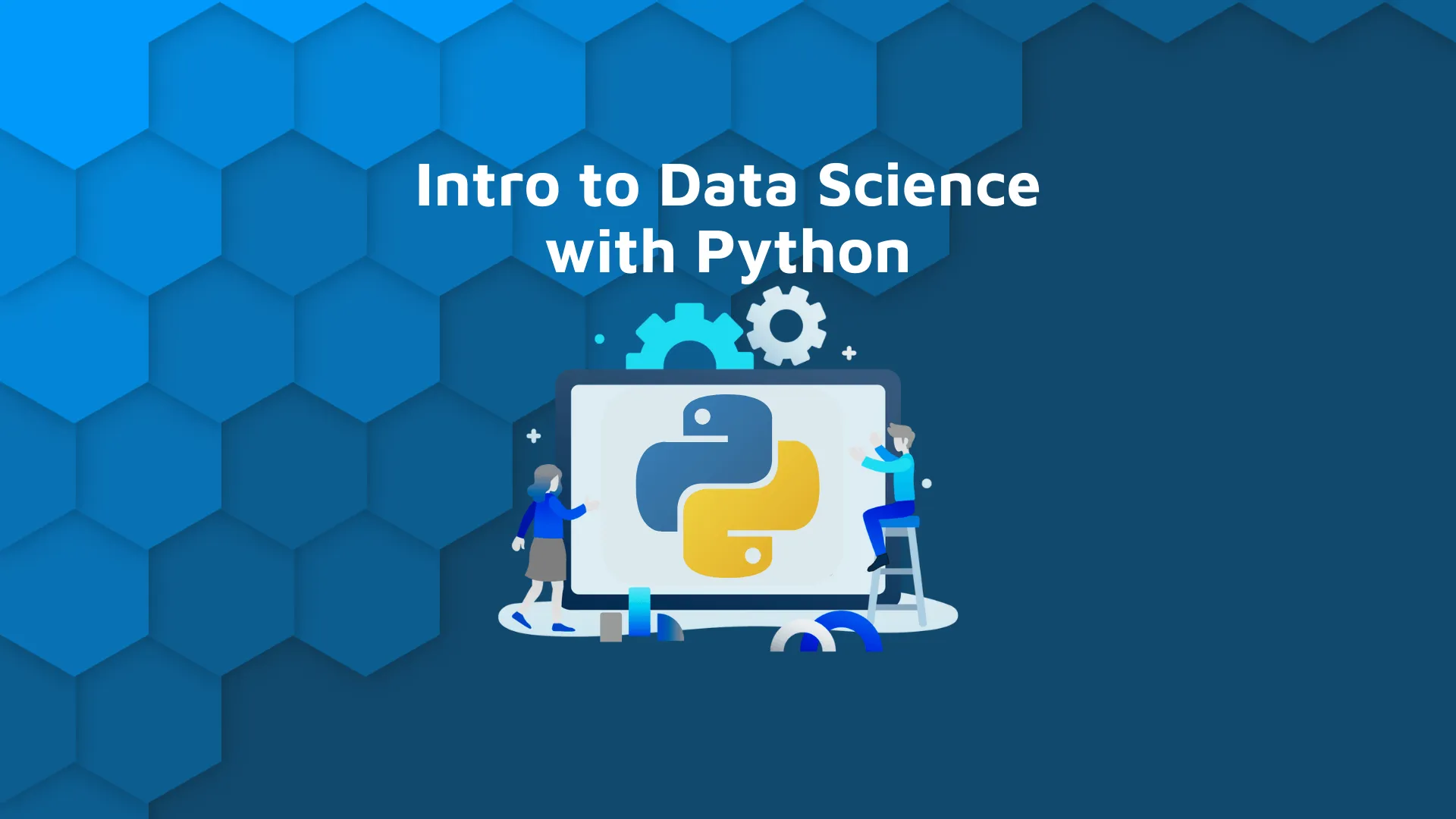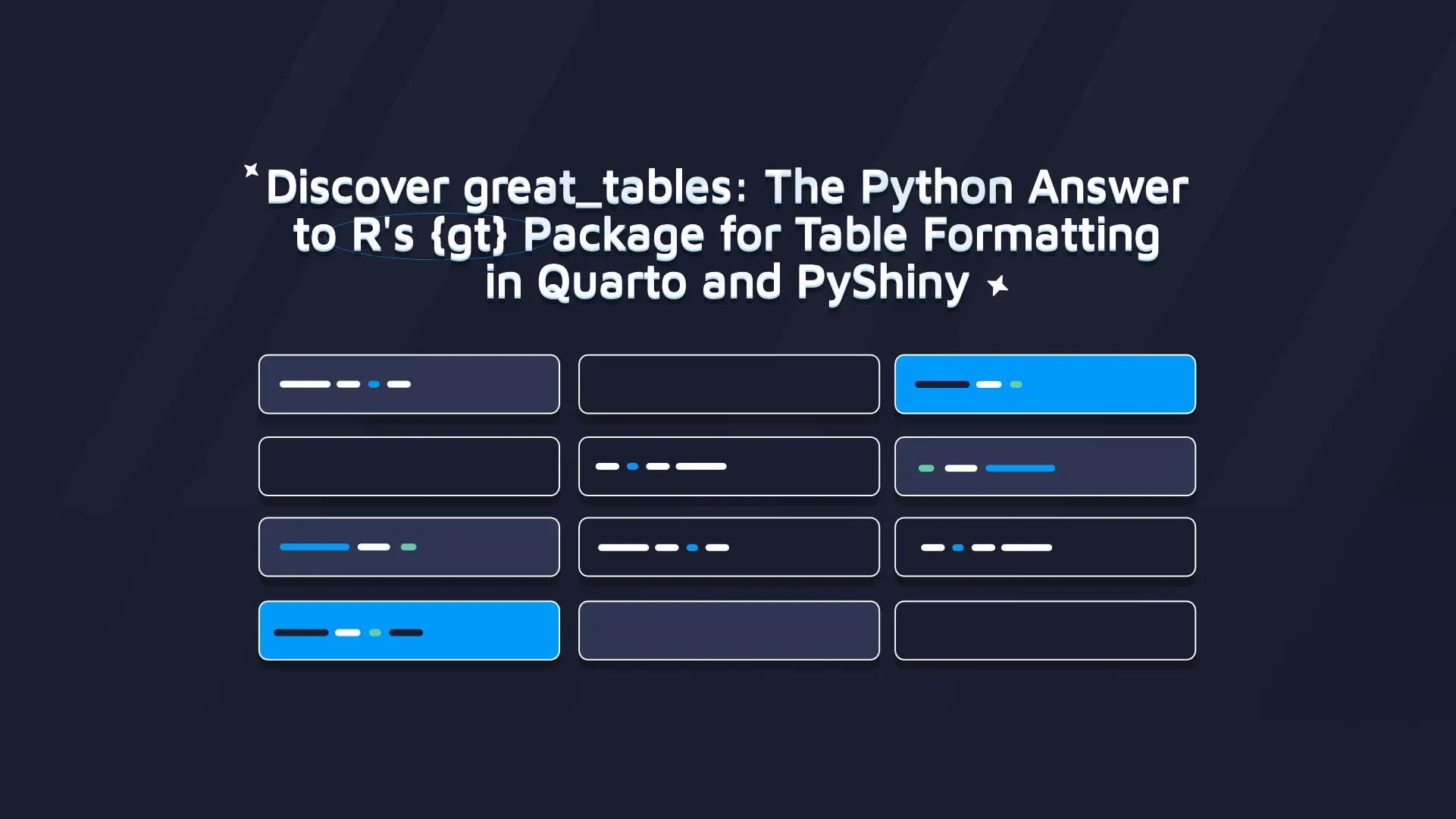
We’re happy to announce a new data science in Python course by Appsilon has been released and is available to everyone for free, as open-source material! <p style="text-align: center;">Check out the course <a href="https://github.com/Appsilon/datascience-python" target="_blank" rel="noopener">repository on GitHub</a>! </p> The course is a great way to introduce yourself to the Data Science world. It does require you to know the basics of Python. It dives deeper than one might expect in the beginning and the benefits of this are seen immediately in the next lecture. Each lecture has accompanying homework with example solutions. <h2>Intro to Data Science with Python Course outline</h2> <h3>1. Introduction to the Data Science World </h3><ul><li>Explanation of various terms like ML/DS/AI/DNN</li><li>Modern environment setup</li><li>The Notebook way of writing code</li></ul> <h3>2. Numerical Operations in Python </h3><ul><li>Introduction to the <a href="https://numpy.org/doc/stable/" target="_blank" rel="nofollow noopener">numpy</a> library</li></ul> <h3>3. Overview of Different Data Formats Used in the Data Science</h3><ul><li>Deep dive into dataframes using the pandas library</li></ul> <h3>4. Basics of Data Visualization in Python </h3><ul><li>A quick introduction to libraries <a href="https://matplotlib.org/" target="_blank" rel="nofollow noopener">matplotlib</a> and <a href="https://plotly.com/python/plotly-express/" target="_blank" rel="nofollow noopener">plotly</a></li></ul> <h3>5. Machine Learning for Beginners Using <a href="https://scikit-learn.org/stable/" target="_blank" rel="nofollow noopener">scikit-learn</a> Library</h3> <h3>6. Reporting, Deployment, and Data Presentation </h3><ul><li>Multiple examples of shareable dashboards in <a href="https://streamlit.io/" target="_blank" rel="nofollow noopener">streamlit</a></li><li>Elegant and automatic reports in <a href="https://quarto.org/" target="_blank" rel="nofollow noopener">quarto</a></li><li>RESTful APIs in <a href="https://fastapi.tiangolo.com/" target="_blank" rel="nofollow noopener">fastapi</a></li></ul> <blockquote>Prepping for a data science interview? Practice these <a href="https://appsilon.com/data-science-sql-interview-questions/" target="_blank" rel="noopener">top 10 Data Science SQL interview questions</a>.</blockquote> <h2>Intro to Data Science in Python Course overview</h2> In this course, we use tools that can be easily leveraged in RStudio (Posit) Connect to work and share your data science products. RStudio Connect is an excellent way for Data Scientists to use their preferred tools and share insights with teams/clients in one, easy-to-use location. You can host Jupyter Notebooks, Streamlit apps, Quarto reports, fastapi APIs, and more! Deliver key insights to decision-makers, at the right time, in the right format, without sacrificing your favorite tools. You most likely won’t need Connect if you’re an individual starting out, but if you work in a team or need enterprise solutions - we highly recommend it. <blockquote>Get our complete guide to <a href="https://appsilon.com/r-xgboost/" target="_blank" rel="noopener">gradient boosting and XGBoost in R</a>.</blockquote> The course also tries to sneak in some more advanced libraries like <a href="https://numba.pydata.org/" target="_blank" rel="nofollow noopener">numba</a>, <a href="https://www.pola.rs/" target="_blank" rel="nofollow noopener">polars</a>, and <a href="https://xgboost.readthedocs.io/en/stable/python/python_intro.html" target="_blank" rel="nofollow noopener">xgboost</a> by using convincing use cases. We encourage you to explore these further. <h2>Who is this Data Science course for?</h2> This course is for those with some previous knowledge of Python; particularly those who are interested in applying Python for data science. We’ll show tricks and tips useful for STEM/economic students, but these are also applicable to a wide array of subjects. <blockquote>Ready for more? Try these <a href="https://appsilon.com/data-science-take-home-challenges" target="_blank" rel="noopener">top 5 data science take-home challenges in R</a> and see if you can translate them to Python!</blockquote> The secondary goal of the course is to show participants how to use free tools that are industry standards. We will avoid proprietary software like Matlab/Statistica/SAS. <h2>Course license</h2> The course has been prepared by <a href="https://pstorozenko.github.io/" target="_blank" rel="nofollow noopener">Piotr Pasza Storożenko</a> from <a href="https://appsilon.com/" target="_blank" rel="noopener">Appsilon</a>. It is available under <a href="https://creativecommons.org/licenses/by/4.0/" target="_blank" rel="nofollow noopener">CC BY 4.0</a> license. Feel free to use these materials for your use and courses; please attribute the original author. <h2>Why is Appsilon sharing a course for Data Science in Python?</h2> As contributors to R open source, Appsilon believes in the flexibility and utility of open-source materials. We’ve contributed <a href="http://shiny.tools" target="_blank" rel="noopener">several R packages</a> that make R shiny apps more beautiful, dynamic, and secure. We do this to benefit the R community and improve data science tooling for all users. <blockquote>Get the most out of your Machine Learning and <a href="https://appsilon.com/pytorch-lightning-hydra-templates-in-machine-learning/" target="_blank" rel="noopener">Data Science projects with PyTorch Lightning and Hydra</a>.</blockquote> Appsilon develops and scales Shiny apps for Fortune 500 companies, NGOs, research institutions, government agencies, and more. We’ve scaled Shiny apps for enterprise customers that are capable of thousands of simultaneous users and can operate on a distributed infrastructure. In the process we’ve <a href="https://demo.appsilon.com/" target="_blank" rel="noopener">demonstrated the impressive nature of R and Shiny</a> for data science storytellers; we made several of these <a href="https://templates.appsilon.com/" target="_blank" rel="noopener">free-use Shiny Templates</a>. And with Shiny for Python, we look forward to evangelizing Posit’s technology in the Python community. If you’re interested in trying out Shiny for Python, we’ve provided a <a href="https://appsilon.com/shiny-for-python-introduction/">short tutorial on how to get started</a>. We hope to share the power of Shiny with Data Scientists in both R and Python camps. We hope this course helps users get started on their data science journey and encourages new insights using Shiny!
Contact us!


















